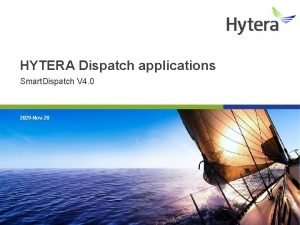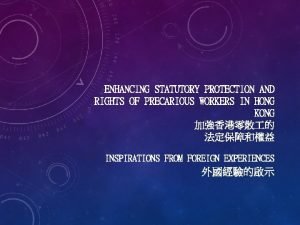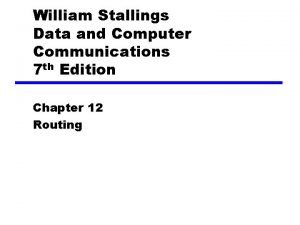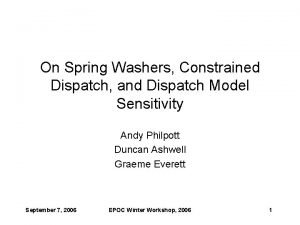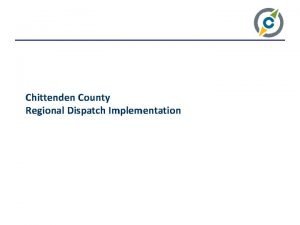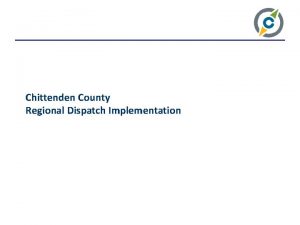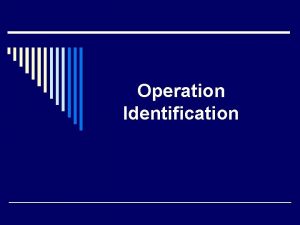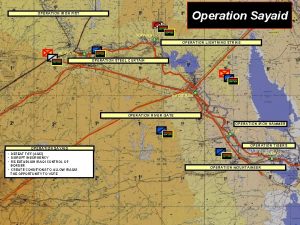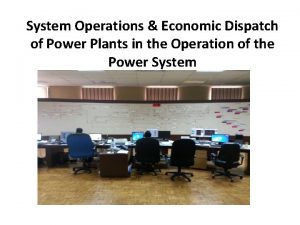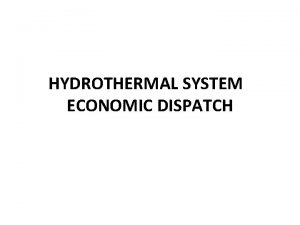Least Cost System Operation Economic Dispatch 1 Smith



















- Slides: 19

Least Cost System Operation: Economic Dispatch 1 Smith College, EGR 325 March 3, 2006 some slides from T. Overbye, UIUC 1

Overview • Complex system time scale separation • Least cost system operation – Economic dispatch first view – Generator cost characteristics • Four curves of generator performance • Constrained optimization – Linear programming – Economic dispatch completed 2

• Long term system planning: Production cost – Decide what to build • Hourly to monthly decisions: Unit commitment – Decide which plants to have warmed up and ready to go – Different technologies have different requirements • Minutes to Hour: Economic dispatch – Decide which plants to use to meet the expected load now – 5 minutes to 1 hour • Cycles to Minutes: Short term system operations and Load Flow Model – Maintain supply and demand balance moment to moment – ~17 msec per cycle up to 5 minute control functions 3

Power System Economic Operation • The installed generating capacity is greater than the load at any specific moment • This give us a lot of flexibility in deciding which generators to use to meet the load at any moment 4

What is “Economic Dispatch? ” • Economic dispatch (ED) determines the least cost dispatch of generation for a system. – To dispatch ≡ To order to generate (more) energy • Economic Dispatch (from EPACT 1992) – The operation of generation facilities to produce energy at the lowest cost to reliably serve consumers, recognizing any operational limits of generation and transmission facilities. 5

Economic Dispatch Formulation • Focusing on our objective – How do we represent our objective mathematically? – What mathematical tool do we use to obtain this objective? • What does solving our (to be developed) set of equations help us to decide? 6

Economic Dispatch Formulation • Therefore we need to understand – How to represent system generating costs mathematically • Costs of operating (dispatching) generators • Indirect costs associated with constraints on the system – How to find the minimum system cost given • Generator costs and • System constraints Constrained optimization via linear programming 7

Generator Cost Characteristics 8

Generator Costs • Many fixed and variable costs are associated with power system operation – The major variable cost is associated with generation • The cost to generate a MWh can vary widely – For thermal units we have well-defined equations to calculate generating costs – For other generating units (e. g. , hydro and nuclear) the cost is difficult to quantify 9

Time Variation in Costs 10

Natural Gas Prices Over the Years (adjusted for inflation) Peak was $15/Mbtu, current is $ 11

As we have already seen, different generators are used in different ways, as determined by their different costs. . . 12

Generator Loading Peak Load Intermediate Baseload 13

Generator Loading Peak Load Intermediate Baseload 14

m ea St s Ga se To minimize total system generating costs we develop cost relationships between cost of power output and operating costs, input Stack Boiler Thermal Turbine Generator Cooling Tower G Condenser Pump Coal feeder Burner Body of water 15

Mathematical Formulation of Costs • Typically curves can be approximated using – quadratic or cubic functions – piecewise linear functions • Relying on the quadratic nature of HR, we will use a quadratic cost equation • Standard quadratic representation is. . . ? 16

Mathematical Formulation of Costs • From total cost to marginal cost. . . • The marginal cost is one of the most important quantities in operating a power system – Marginal cost = incremental cost: the cost of producing the next increment of power (the next MWh) • How do we find the marginal cost? 17

Discussion Questions • If we have 3 generators, our first-pass system cost equation is. . . ? • We find the minimum system cost by. . . ? • How do we then find values for PGi from each generator (our original goal)? • What is missing for the actual problem of finding the minimum system operating cost? 18

Summary • Formulated the economic dispatch problem conceptually • Examined the mathematical origin for generator costs – Defined heat rate • Began mathematical formulation of the economic dispatch problem • To be completed next Wednesday 19
 Both job order costing and process costing
Both job order costing and process costing Hytera dispatch system
Hytera dispatch system Automated dispatch system
Automated dispatch system Labour dispatch system
Labour dispatch system Ambulance dispatch system requirements specification
Ambulance dispatch system requirements specification Weber's industrial location theory
Weber's industrial location theory Bulk gaining industry ap human geography
Bulk gaining industry ap human geography Weber's least cost theory
Weber's least cost theory Alfred weber's least cost theory
Alfred weber's least cost theory Webers model
Webers model Least cost theory
Least cost theory Webers least cost theory
Webers least cost theory Minimum cost path dijkstra
Minimum cost path dijkstra Least cost rule
Least cost rule Neo malthusians definition ap human geography
Neo malthusians definition ap human geography Lh stallings
Lh stallings Economic growth vs economic development
Economic growth vs economic development What is economic growth and development
What is economic growth and development Economics unit 1 lesson 2 difficult choices
Economics unit 1 lesson 2 difficult choices Wildcad prescott
Wildcad prescott

